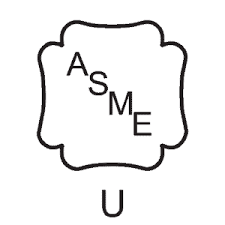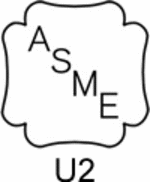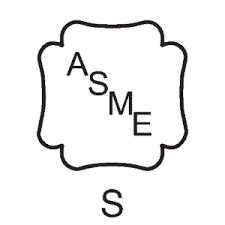When it comes to pressure vessel fabrication, you need manufacturers who are certified experts. They must be capable of completing your projects to the required standards. With that in mind, it’s important to know what the required standards are for pressure vessels, and how they’re indicated. This blog will cover U, U2, R, and S stamps, what they are, and why they’re important.
What are pressure vessel stamps?
Pressure vessel stamps are certifications awarded to manufacturers and inspectors of pressure vessels for compliance with specific pressure vessel code requirements. Vessels that are designed, constructed, inspected, and tested by manufacturers that have been awarded a stamp for their compliance with the specific code bear that stamp.
Essentially, a pressure vessel stamp is a certification or guarantee of quality. This is similar to other industries, where you may see a stamp or sticker on an item verifying that it has been inspected by the quality assurance team and meets the relevant specifications.
Where these stamps differ from other QA/QC stamps is that they aren’t internal to the manufacturer—they’re determined by a third party against standards that are not developed by the manufacturer, but by a third party. This means that there is consistency in the minimum acceptable quality of stamped vessels across manufacturers.
What do the different pressure vessel stamps mean?

U Stamp
The U stamp certifies that a manufacturer meets the quality control system requirements laid out in the American Society of Mechanical Engineers (ASME) Boiler and Pressure Vessel Code (BPVC). Manufacturers with this stamp are permitted to design, fabricate, inspect, and test unfired pressure vessels.
Pressure vessels bearing the U stamp meet the requirements of a pressure vessel described in Section VIII Division 1 of the BPVC.
In order to retain the use of the stamp, manufacturers must update design and fabrication processes regularly and are subject to routine inspections and examinations.

U2 Stamp
The U2 stamp is also an ASME certification for pressure vessel design, fabrication, inspection, and testing. Pressure vessels bearing this stamp meet the requirements for pressure vessels described in Section VIII Division 2 of the BPVC. This division of the standard provides rules alternative to those of the U stamp.

S Stamp
The ASME stamp allows manufacturers to fabricate ASME-compliant pressure retaining parts, power boilers, and power piping. Like the U and U2 stamps, it requires a quality assurance program that meets the standards outlined in the ASME Boiler and Pressure Vessel Code.

R Stamp
The R stamp is awarded by The National Board of Boiler and Pressure Vessel Inspectors (NBBI). It allows the recipient to repair and alter pressure-retaining equipment, including pressure vessels and boilers.
In order to receive the R stamp and Certificate of Authorization, a manufacturer or organization must meet the following requirements
- Maintain a quality system compliant with the National Board Inspection Code (NBIC).
- Retain a complete copy (print or electronic) of the current edition of the NBIC.
- Retain and make accessible a copy of the construction code relevant to the scope of work.
- Have an inspection agreement with an inspection agency that is authorized by the NBBI.
- Complete the application process for the R stamp Certificate of Authorization.
Why are pressure vessel stamps important?
If your industrial application uses pressure vessels of any kind, pressure vessel stamps are an important consideration when choosing a manufacturer from which to source your pressure vessels. The stamp assures that the vessel will meet the requirements of the relevant code, ensuring that the vessel will be fit for service in your application.
Additionally, codes like the ASME BPVC exist to ensure safe and efficient operations of pressure vessels. Depending on your application and industry, regulations may require that your pressure vessels meet the requirements of one of these stamps. Such regulations may also stipulate inspection criteria and timelines, including requiring certified inspectors.
No matter which stamp you need or which ASME code requirements your pressure vessel must meet, the PALA team has the facilities and the capability to deliver. For more information, give our team a call or contact us online today.

